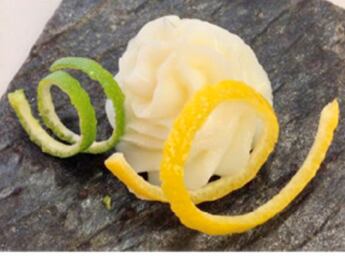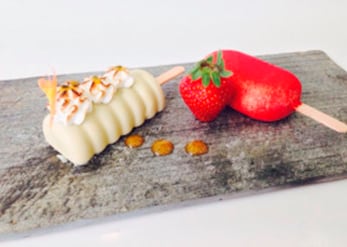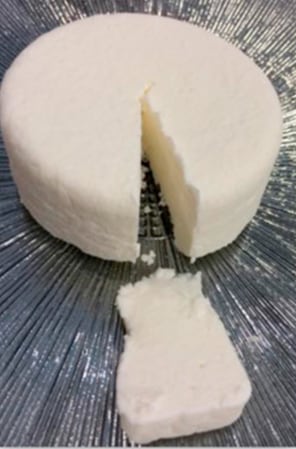The researchers, led by Marta Garcés-Rimón from the Madrid-based Instituto de Investigación en Ciencias de la Alimentación (CIAL), enzymatically hydrolysed different solutions of whole egg, egg whites and egg yolk using a food-grade aminopeptidase from Aspergillus oryzae.
This allowed them to develop healthy and value-added novel gels and foam with textures ranging from smooth, creamy and rigid, that are both value-added and healthy.
"These results are promising and it is envisaged that they will promote new investigations in the development of foods with novel textures," they write, adding that this is the first time in-depth research has been carried out into the enzymatic hydrolysis of egg proteins in order to obtain new textures for culinary use.

The researchers were able to replicate cottage cheese using egg whites and a creamy custard-style product using both the yolk and white together, or the yolk alone.
The first product was hydrolysed egg white with sugar, lime and lemon extracts added, resulting in "a very creamy dessert with flavour and texture similar to lemon cream, without including fat or fat-replacing additives", write the authors. This particular product could also be successfully frozen to produce

dairy-free ice-cream.
Meanwhile, hydrolysed egg whites with salt added to the mix produced an egg-based, fat-free and dairy-free cheese analogue with a taste and mouthfeel similar to fresh or cottage cheese.
Garcés-Rimón and her team of researchers also produced a foam which allowed for air to be added back into the matrix once collapsed.
According to the researchers, the egg-derived products developed are both cheap and clean label, contain very few additives and - despite the process of hydrolysation which can result in bitter flavours - have a neutral taste profile.
"The elaboration process is simple, fast and allows an optimum use, not only of the whole egg, but also of its fractions, yolk and white, with the absence of waste or by-products. Therefore, it provides the means to improve the techno-functional properties of the egg as an ingredient and to expand its use in new recipes, and in the development of new food products."
The products are of particular interest to food manufacturers wishing to develop dairy-free foods, and could also be of interest to manufacturers developing food formulations for individuals with difficulties chewing.

"All products are lactose and milk protein-free, while they have an appearance, texture taste and flavour similar to dairy products," they write.
Given that protein hydrolysates are more easily digested and absorbed in the gut than intact proteins, these products have healthy nutritive profiles with greater amino acid availability and better muscle protein synthetic response.
Method
The eggs were first acidified to the optimum enzyme pH of 5.5. Hydrolysis was then carried out at 50 °C under constant stirring in a thermostatic water
bath for up to two hours. Several ingredients were then added, such as flavours and colours in liquid or powdered forms (such as salt, sugars, fruit or vegetal infusions), and enzyme inactivation was then carried out by heating the samples at 95 °C for 15 min in a water bath, followed by cooling at 4 °C.
In order to analyse the sensory characteristic of the products, they recruited 21 panellists who rated the appearance, texture and flavour of each product using a five-point hedonic scale.
When analysing texture, panellists were asked to consider hardness, adhesiveness, springiness, cohesiveness, chewiness and resilience.
Source: International Journal of Gastronomy and Food Science
"Egg protein hydrolysates: New culinary textures"
Available online April 2016, vol. 3, pp. 17–22 http://dx.doi.org/10.1016/j.ijgfs.2015.04.001
Authors: M. Garcés-Rimón, M. Sandoval, E. Molina, R. López-Fandiño, M. Miguel
